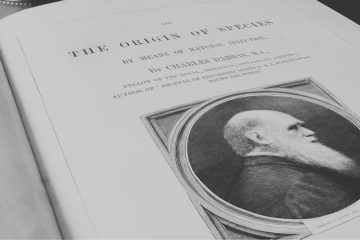What Happened On April 1st?
On April 1st, 1976 in Los Altos, California, technology itself was about to shift to a whole new gear. This was the humble beginning of Apple Computer Co., the company that would become Apple Inc., the iconic tech giant we know today. Fueled by the vision of two college dropouts, Steve Jobs and Steve Wozniak, Apple set out to revolutionize the way people interacted with computers.
Did You Know?
Did you know the original Apple logo featured Sir Isaac Newton sitting under an apple tree? Thankfully, Jobs and Wozniak opted for a simpler, cleaner design we recognize today! Not only that, Apple almost went with the name “Apple Computer” but ultimately settled on the shorter, more impactful “Apple Inc.”
Steve Jobs, known for his charisma and keen eye for design, wasn’t just a smooth talker. He possessed a remarkable ability to envision the future of technology and translate complex ideas into user-friendly products. However, the technical genius behind the first Apple computer came from Steve Wozniak, a brilliant engineer with a passion for creating accessible and affordable computers for everyone.
How Were They Inspired?
Obviously, Jobs and Wozniak weren’t operating in a vacuum. They drew inspiration from the burgeoning personal computer revolution of the 1970s. The Altair 8800, released in 1975, was a kit computer that allowed hobbyists to build their own machines. This concept resonated with Wozniak, who saw the potential for personal computers to reach a wider audience.
So, What Was Their First Product?
The very first product from Apple, the Apple I, wasn’t quite the sleek, user-friendly computer we associate with the brand today. Essentially, it was a collection of circuit boards that required technical expertise to assemble and operate. However, this showcased Wozniak’s engineering prowess and laid the foundation for what was to come.
And What Followed?
Despite the Apple I’s limitations, it garnered interest from computer enthusiasts. This initial success, coupled with Jobs’ strong belief in the potential of personal computers, propelled the duo to develop the Apple II, a more user-friendly machine with a keyboard and a groundbreaking graphical user interface. As we know, a “user-focused experience” is now a hallmark of every single Apple product, forever changing the way people interacted with technology in general.
Now, Apple Inc.’s evolution from a fledgling garage operation to a trillion-dollar company is a story of innovation, savvy marketing, and a relentless pursuit of user experience. While the Apple I signified the company’s origins, it was the release of the Apple II in 1977 that truly launched them into the mainstream. This user-friendly machine, with its innovative keyboard and graphics capabilities, opened the door for a whole new generation of computer users.
The Release Of The Macintosh
Apple didn’t rest on its laurels. In 1984, they unveiled the Macintosh, a revolutionary computer boasting a graphical user interface (GUI) that relied on a mouse instead of complex command lines. This intuitive way of interacting with computers proved to be generational, making technology more accessible to the average person. The now-iconic “1984” Super Bowl commercial, portraying Apple as a rebellious underdog challenging the dominance of IBM, further solidified the brand’s image as a bold innovator.
The Minimalistic Branding
Apple’s success story isn’t just about hardware. From the get-go, the company understood the power of branding and cultivated a distinct image. Their sleek, minimalist designs, coupled with user-friendly interfaces, fostered a sense of sophistication and ease of use that resonated with consumers.
As I’m sure we all know, Apple stores, with their clean lines and knowledgeable staff, became destinations in themselves, not just places to buy electronics. This focus on experience solidified brand loyalty and created and still create a passionate Apple fanbase.
The Monopoly Of Apple
Apple’s commitment to innovation and user experience paid off handsomely. The company’s stock price has skyrocketed over the years, making it one of the most valuable companies in the world. In 2018, Apple became the first U.S. company to reach a trillion-dollar market capitalization, a remarkable feat for a company that started in a garage.
Apple’s financial success is undeniable. However, their legacy is about more than just money. They pushed the boundaries of technology, making computers more accessible and user-friendly. From the Apple II to the iPhone, their products have transformed the way we communicate, work, and entertain ourselves. As Apple continues to innovate, one thing is certain: the story of this tech giant is far from over.
What Did You Learn?
So, what do you think about Apple?
As a majority of the world owns at least own at least one Apple product or service, the company has major influence!
In the future, do you think that there will be a brand that could either compete or overtake Apple?
Thank you! See you on the flip side!





